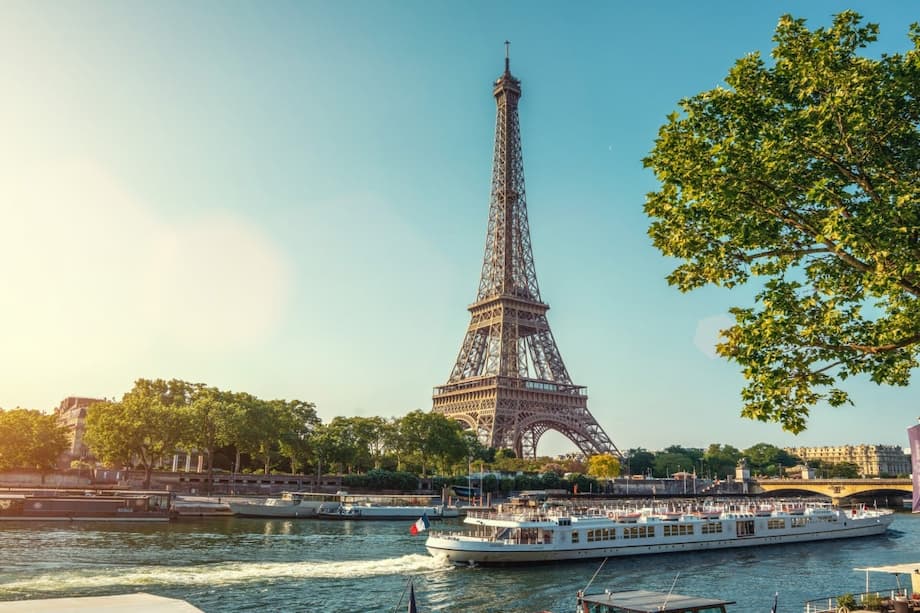Paris Welcomes a New Wave: Chinese Tourists Drive a 15% Surge in 2025
Paris, the City of Lights, is experiencing a remarkable transformation in 2025 as Chinese tourists return in record numbers, fueling a 15% year-on-year increase in visits during the summer months. This surge is reshaping the city’s tourism landscape, revitalizing local businesses, and sparking both excitement and concern among Parisians. With the echoes of the 2024 Olympic Games still resonating, Paris finds itself at the crossroads of global travel trends, economic opportunity, and the challenges of overtourism.
- Paris Welcomes a New Wave: Chinese Tourists Drive a 15% Surge in 2025
- Why Are Chinese Tourists Flocking to Paris?
- The Broader European Context: Chinese Tourism on the Rise
- Economic Impact: A Lifeline for Parisian Businesses
- Local Reactions: Balancing Opportunity and Overtourism
- New Experiences: Swimming in the Seine and Sustainable Initiatives
- What’s Next for Paris Tourism?
- In Summary
Why Are Chinese Tourists Flocking to Paris?
Several factors are driving the dramatic rise in Chinese visitors to Paris this year. After years of pandemic-related travel restrictions, Chinese outbound tourism has rebounded with unprecedented enthusiasm. According to data from Choose Paris Region, about 100,000 Chinese nationals are expected to visit Paris and the surrounding Île-de-France region during the summer of 2025. This influx is second only to the surge in Canadian visitors, who posted a 31% increase compared to 2024.
Chinese tourists are drawn to Paris for its iconic landmarks, luxury shopping, and rich cultural experiences. The city’s world-famous attractions—such as the Eiffel Tower, Louvre Museum, and Palace of Versailles—remain top draws. But there’s more to the story than just sightseeing. Chinese travelers are increasingly seeking authentic, immersive experiences that go beyond the typical tourist itinerary.
Changing Travel Habits: From Group Tours to Deep Cultural Immersion
In 2025, Chinese tourists are traveling differently than before. Industry data from platforms like Fliggy and Trip.com Group show that travelers are spending more per trip, opting for longer stays, and customizing their itineraries to include cultural activities, fine dining, and local festivals. Flexible travel schedules are on the rise, with many visitors extending their vacations beyond traditional holiday periods to maximize their Parisian experience.
As one Chinese user wrote on the social platform RedNote,
“The French have all left, some neighborhoods have barely any people.”
This observation, posted alongside photos of deserted boulevards near Parc Monceau and the Musée d’Orsay, highlights the unique atmosphere of Paris in August, when locals traditionally escape the city for summer holidays. For Chinese tourists, the quieter streets offer a rare opportunity to explore Paris without the usual crowds.
Luxury Shopping and Culinary Adventures
Paris’s reputation as a global capital of luxury shopping continues to attract Chinese visitors, who have long been among the top spenders in Europe. Department stores like Galeries Lafayette and boutiques along the Champs-Élysées are seeing increased foot traffic, with Chinese tourists contributing over €447 million to the local economy and spending an average of €445 per day. However, recent trends indicate a shift toward more cost-conscious spending, with most travelers now budgeting between €100 and €200 daily, reflecting broader economic changes in China.
Beyond shopping, Chinese tourists are embracing Paris’s culinary scene. From Michelin-starred restaurants to cozy neighborhood bistros, the city’s diverse gastronomy is a major draw. Food tours, cooking classes, and wine tastings are increasingly popular, offering visitors a taste of authentic French culture.
The Broader European Context: Chinese Tourism on the Rise
Paris’s tourism boom is part of a larger trend across Europe. The European Travel Commission (ETC) reports a 13% year-on-year increase in Chinese tourists continent-wide during the first half of 2025. An impressive 72% of Chinese survey respondents expressed a willingness to travel long-haul to Europe, far surpassing the global average of 39%. This enthusiasm is fueled by a combination of economic recovery, pent-up demand, and a renewed appetite for international travel.
While American and Japanese visitors are showing less interest in European vacations this year—due in part to economic pressures and currency fluctuations—Chinese tourists are filling the gap. The ETC found that only 33% of U.S. travelers intend to visit Europe in 2025, a 7% decrease from last year. In contrast, Chinese arrivals are surging, driven by rising disposable income, favorable travel policies, and a shift in consumer priorities toward lifestyle and personal experiences.
Paris’s Winter Tourism Boom
The surge in Chinese visitors is not limited to the summer months. Paris is also leading France’s winter tourism boom in 2025, outshining traditional destinations like the Alps and the French Riviera. Seasonal attractions such as the Lumières d’Hiver Festival, expanded art exhibitions at the Louvre and Musée d’Orsay, and festive holiday markets are drawing travelers from around the world. Tour operators are increasingly crafting winter-themed itineraries centered around these experiences, making Paris a year-round favorite for international tourists.
Economic Impact: A Lifeline for Parisian Businesses
The return of Chinese tourists is providing a much-needed boost to Paris’s economy. After the devastating impact of the COVID-19 pandemic, which saw international arrivals plummet, the city’s hotels, restaurants, and retailers are welcoming the influx of visitors. Tourism now accounts for 8% of France’s GDP, and the spending power of Chinese travelers is helping to offset declines from other markets.
Luxury shopping remains a key driver, but spending patterns are evolving. According to Bloomberg, while Chinese tourists are returning in large numbers, they are spending less per capita than before the pandemic. This shift reflects broader economic trends in China, including weaker domestic demand and slowing retail sales. Nevertheless, the overall contribution of Chinese visitors to Paris’s economy remains significant, particularly in sectors like hospitality, transportation, and cultural attractions.
Government Initiatives and Sustainable Tourism
Recognizing the importance of tourism, the French government has launched the Destination France Plan, a €1.9 billion initiative aimed at promoting greener, more sustainable travel. The plan encourages the use of rail over short-haul flights, supports the development of smaller cities and rural destinations, and prioritizes local food experiences. Paris’s extensive rail network allows tourists to explore beyond the city, helping to distribute visitors more evenly across the country and reduce pressure on popular sites.
Authorities are also investing in digital, inclusive, and ecological tourism initiatives to ensure Paris remains a model of responsible tourism. These efforts are designed to balance economic growth with the preservation of the city’s cultural and environmental heritage.
Local Reactions: Balancing Opportunity and Overtourism
While the surge in Chinese tourists is a boon for Paris’s economy, it is also raising concerns among local residents. Neighborhoods like Montmartre, already popular with visitors thanks to the Olympic Games and the hit TV series “Emily in Paris,” are experiencing what some locals describe as the “Disney-fication” of their communities. Banners reading “Montmartrois en colère” (Angry Montmartre Residents) now hang from balconies and windows in protest against the effects of mass tourism.
Residents cite issues such as traffic congestion, noise pollution, rising rents, and the loss of community identity as growing problems. The influx of tourists has led to the displacement of traditional businesses, with souvenir shops replacing local bakeries and cheese stores. The real estate market is feeling the strain, as the proliferation of short-term rentals drives up property values and makes it harder for locals to find affordable housing.
Frédéric Hocquard, a representative of Paris City Hall, recently warned that the city cannot sustain a much higher volume of visitors, pointing to a “super-concentration” in areas like the Eiffel Tower, the city center, and Montmartre. To address these challenges, the city has implemented measures such as restricting ticket sales for major attractions and requiring advance booking for sites like Notre Dame Cathedral.
Tourismophobia: A Growing Phenomenon
The backlash against overtourism is not unique to Paris. Across Europe, cities like Barcelona and Venice are grappling with similar issues. The term “tourismophobia”—coined by French academic Jean-Christophe Gay—describes the growing aversion to tourists, particularly those associated with mass tourism. As Professor Gay notes,
“Prejudice against tourists tends to increase as tourism becomes more democratized.”
The challenge for Paris is to find a balance between welcoming visitors and preserving the quality of life for residents.
New Experiences: Swimming in the Seine and Sustainable Initiatives
One of the most symbolic changes in Paris this year is the reopening of the Seine for swimming after a century-long ban. Thanks to a major restoration project accelerated by preparations for the 2024 Olympic Games, the river is now clean enough for public use. The newly opened river pools have quickly become popular with both locals and tourists, offering a unique way to experience the city’s natural beauty and environmental recovery.
This initiative reflects Paris’s broader commitment to sustainability and innovation in tourism. The city has expanded pedestrian zones, introduced eco-friendly transit options, and invested in green tourism initiatives. Travelers are increasingly seeking destinations that align with their environmental values, and Paris is meeting the moment with offerings like biking tours, electric boat cruises, and eco-conscious accommodations.
What’s Next for Paris Tourism?
Looking ahead, Paris expects continued growth from both traditional and emerging markets. The city’s robust tourism infrastructure, cultural appeal, and commitment to sustainability position it as a global leader in travel. Authorities are enhancing digital, inclusive, and ecological tourism initiatives to ensure Paris remains attractive to a diverse range of visitors.
However, the challenges of overtourism and community impact will require ongoing attention. As Paris navigates this new era of global travel, the city’s ability to balance economic opportunity with social and environmental responsibility will be key to its continued success.
In Summary
- Chinese tourists are driving a 15% surge in Paris visits in 2025, revitalizing the city’s tourism sector after the pandemic.
- Travelers from China are seeking deeper, more authentic experiences, with a focus on culture, cuisine, and sustainability.
- Paris’s economic recovery is being fueled by increased spending from Chinese visitors, though per capita spending is slightly lower than pre-pandemic levels.
- Local residents are expressing concerns about overtourism, particularly in popular neighborhoods like Montmartre, prompting city officials to implement new management measures.
- Government initiatives such as the Destination France Plan are promoting sustainable tourism and encouraging visitors to explore beyond Paris.
- Innovative experiences, like swimming in the Seine, reflect Paris’s commitment to environmental recovery and enhancing the visitor experience.
- The city faces the ongoing challenge of balancing tourism growth with the preservation of local culture and quality of life.




